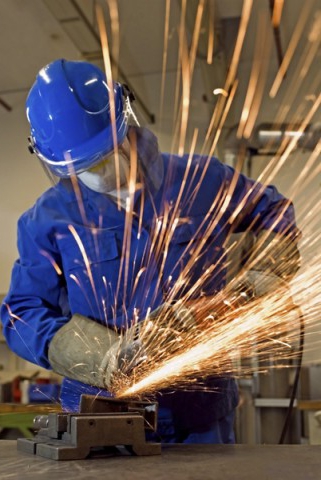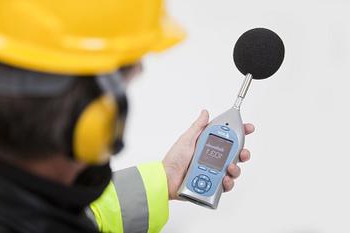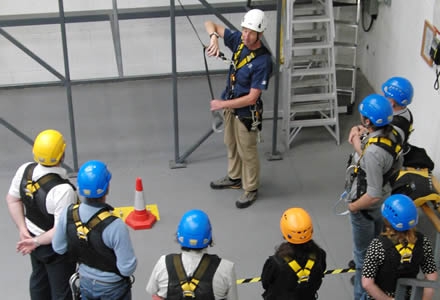The head of any enterprise must remember that ensuring labor protection requirements is his responsibility. The working conditions in the organization must comply with current standards. State regulatory requirements labor protection Mandatory for citizens and legal entities in the process of carrying out any type of activity. This requirement is contained in Art. 211 TC. Next, we consider the basic requirements of labor protection. 
The legislative framework
General requirements for labor protection are contained in the Constitution. So, in Art. 37, p. 3 it is established that everyone has the right to work in conditions that meet the rules of hygiene and safety. In Art. 219 TC established the basic rights of the worker to:
- Working conditions in accordance with applicable requirements.
- Obtaining reliable information from the employer about:
- Existing health risks;
- conditions and safety at the enterprise;
- measures to prevent exposure to hazardous or harmful production factors.
Key events
State regulatory requirements for labor protection require certain measures to protect the health and life of employees in the course of professional activities at the enterprise. They include such events:
- Legal.
- Sanitary and hygienic.
- Organizational and technical.
- Socio-economic.
- Rehabilitation.
- Therapeutic and other.
The procedure for the implementation of activities
Compliance with labor protection requirements, as well as control over their implementation, is carried out according to certain rules. For manufacturing companies with more than 50 employees, the introduction of an appropriate department or position is required, according to which the employee will be responsible for the safety of workers in the enterprise. In the latter case, the employee is required to undergo training in labor protection requirements. In organizations where the number of employees does not exceed 50 people, decisions on the formation of the corresponding department or the introduction of a position are made taking into account the specifics of the enterprises. If there is no service or employee responsible for safety at work, their functions are performed and the employer personally, the head of the company, or another authorized employee are responsible. A third-party organization or labor protection specialist can also solve these problems. In this case, the requirements for safety at work are fulfilled in accordance with the contract and current legislation.
Local acts
They are developed and approved by the employer. Local legal acts establish the requirements for the organization of labor protection at the enterprise, the formation of safe working conditions. The right to accept them is provided for by Art. 8 shopping mall. According to the provisions, the employer can approve acts that contain requirements, labor protection instructions, within its competence and in accordance with industry legislation and other documents containing relevant regulations. Orders and instructions of the tenant form the legal basis of the system industrial safety enterprises. In addition, local acts help to prevent accidents and significantly simplify the consideration of such situations if, despite the measures taken, they occur. Regulatory labor protection requirements are mandatory for both the employer and the company employees.There is a specific methodology for developing relevant standards. Let's consider it further. 
State requirements for labor protection: legal aspect
According to Art. 211 of the Labor Code, the procedure for the development, adoption and amendment of by-laws related to industrial safety is established by a Government Decree. The number of documents setting out labor protection requirements includes standards, regulations, recommendations, and rules. When they are developed, adopted and approved, the opinion of the tripartite commission regulating the sphere of social and production relations in the Russian Federation should be taken into account. Documents containing general labor protection requirements include:
- GOSTs (safety standards).
- Typical instructions and rules.
- Sanitary and epidemiological standards and regulations. They establish requirements for the labor process and environmental factors.
GOST
In the process of developing safety rules at the enterprise, the provisions of the Gosstandart system are taken into account. In particular, this refers to the requirements of labor protection GOST, which sets the relevant standards, the purpose of which is:
- Assisting in protecting workers from exposure to harmful or hazardous working conditions.
- Exclusion of the likelihood of accidents, including fatalities.
GOST 12.0.230 / 2007 contains a description of the system that provides labor safety management at the enterprise. In accordance with paragraph 4 of these Standards, the formation of this structure for occupational safety, including the compliance of working conditions with the requirements established by federal laws and other by-laws, is included in the duties of the employer. In this regard, the employer must demonstrate interest and competent management of activities aimed at ensuring labor protection at the enterprise, and create a system of regulation and control. The main controls are:
- Politics.
- Planning and implementation.
- Organization.
- Analysis.
- Actions aimed at improving the system.

Service Building Guidelines
When creating a unit responsible for industrial safety, the enterprise must follow the provisions of the Resolution of the Ministry of Labor. They approved recommendations on the formation and subsequent activities of the service. According to paragraph 1 of this Decree, management in the field of labor protection at the enterprise is carried out by the head. In their activities, occupational safety officers should be guided by:
- Collective agreement.
- Laws and other industry-specific acts on labor protection in the territory of the Russian Federation and a specific subject.
- Agreements (industry, regional, general).
- Labor protection agreement.
- Other local acts of the enterprise.
Development and adoption of the Rules
Labor protection requirements are formed in accordance with the procedure for creating industry and intersectoral standards. It is approved by the Guidelines for the development and adoption of the Rules. According to paragraph 3.2, the following order is prescribed:
- Formation of a promising project for the development of new, verification (revision) or the abolition of existing rules.
- Approval of the terms of reference for the creation of requirements.
- Development of the first edition of the plan of rules, distribution of the project for familiarization and expression of opinion to interested organizations.
- Formation of a summary of reviews and conclusions on disagreements.
- Creation of the final draft of the Rules.
Development Features
Occupational safety requirements should be stated clearly and as briefly as possible. This will eliminate the possibility of their various interpretations. It is necessary to fix new labor protection requirements in the rules, striving for minimal references to other documents (GOSTs, Construction Norms and Regulations and others).For completeness of the topic in the rules, the reproduction of certain provisions of the law is allowed. As applications can be used:
- Tables
- schedules;
- scheme;
- cards and so on.

Industry and Intersectoral Rules
The following sections should be included in them:
- General requirements. In this chapter, it is necessary to indicate the scope of these Rules, provide a description of the harmful and dangerous factors of production inherent in the activities of this enterprise. The section also provides the parameters of negative conditions allowed by applicable legal acts.
- Safety requirements for employees during the organization and performance of work. In this section, there are standards that production at the enterprise should comply with, measures that exclude direct contact of employees with semi-finished products, billets, raw materials, finished products and waste that can have a negative impact on their condition. The chapter also includes methods of control and regulation aimed at ensuring the protection of workers and emergency shutdown of equipment, as well as recommendations and instructions on the use of personal protective equipment. It is also necessary to include in the section the methods by which timely notification of harmful and dangerous production factors arising in emergency situations will be carried out. Among other things, a rational mode of rest and work should be formed to prevent physical inactivity and monotony, as well as reduce the severity of work.
- Standards for the state of production facilities and sites (for those processes that are carried out outside the workshops). In this section, allowable levels of harmful and dangerous production factors, parameters of temperature, light, humidity and other conditions should be given.
- Requirements for equipment, its location and organization of places for workers. This chapter also specifies communication placement standards.
- Requirements for the transportation and storage of semi-finished products, billets, feedstock, finished products and industrial waste. In this section, it is necessary to reflect the characteristics of these materials and products, rational methods of their maintenance in warehouses. The chapter also indicates the requirements for automation and mechanization of loading and unloading operations that affect the provision of industrial safety.

During development, the Rules may include other sections. The plan of the final version, before being signed, must be checked for compliance with the current legislation, the rules of the Russian language and the sight of the head of the legal department (if any).
Worker regulations: development and approval
The instruction on industrial safety acts as one of the main documents regulating labor protection at the enterprise. When developing rules for employees should be guided by the Methodological recommendations. They are approved by the Resolution of the Ministry of Labor and regulate:
- The order of development and approval.
- Requirements for the contents of the instructions.
The instructions for the employee are drawn up in accordance with:
- The position of the employee.
- A profession or type of work performed by an employee.
Employer Responsibilities
The development of instructions is subject to the provisions of Art. 212 TC. In accordance with it, the responsibility for ensuring occupational safety lies with the employer. In this regard, the employer must, inter alia, take measures to:
- Prevention of activities at the enterprise of persons who in the prescribed manner have not passed familiarization, instruction and training on labor protection. The employer must ensure that all employees undergo an appropriate internship.Based on its results, a knowledge test of labor protection requirements should be carried out.
- To inform workers about the conditions and safety rules at their places, the risk of health problems, as well as appropriate remedies and compensation for work injuries or harm to health.
- Familiarization of employees with the regulations applicable at the enterprise, as well as the liability provided for certain types of violations of labor protection requirements.
- Development and approval of the Rules.
- The presence of regulatory documents containing requirements for industrial safety, taking into account the specifics of workers.

Legal framework for employee regulations
Instructions establishing labor protection requirements are developed in accordance with:
- Intersectoral and industry Recommendations on industrial safety (in their absence - industry or intersectoral Rules).
- The labor protection requirements given in the repair and maintenance documentation of the equipment manufacturer, as well as in the technological acts of the organization, in accordance with the specific conditions of activity.
These requirements are set out regarding the profession, position or type of work performed. It is recommended that the title page for the publication of the Industrial Safety Instruction be issued in accordance with Appendix No. 8, which is contained in Resolution No. 80.
Temporary regulations
Rules of this type are developed when new and reconstructed production enterprises, workshops, sites are put into operation. Temporary labor protection instructions are provided:
- Safe performance of technological work (processes).
- Use of equipment in accordance with repair and technical documentation.
Temporary instructions are developed for the period prior to the adoption of these facilities into operation.
Revision of regulations
Verification of instructions, in accordance with clause 5.6 of Decree No. 80, is organized by the employer. The review of the requirements must be carried out at least once every five years. Earlier this procedure can be performed in the following cases:
- Revision of industry and intersectoral model Instructions and Safety Rules for production.
- Changes in working conditions at the enterprise.
- The introduction of new technologies and equipment.
Instructions may also be revised in accordance with the results of a study and evaluation of materials for investigations of accidents, industrial accidents, as well as studies of the incidence of employees. The instructions must also be checked at the request of representatives of authorized control bodies. If for the entire time during which the provisions of the Instructions were in effect, the employee’s working conditions remained the same, it is extended for the next period. 
Document storage
The head of each unit of the enterprise must have a list of instructions and directly the requirements for labor protection. Documentation for employees may be:
- Issued on hand during the initial familiarization.
- Posted on sites or workplaces.
Instructions may also be stored in other places accessible to employees. The relevant journals keep records of documents, issue papers for employees of the enterprise units. Forms are given in Resolution No. 80 (Appendices 9 and 10).
Industry and Intersectoral Instructions
Their development and approval is regulated by the Methodological recommendations adopted in accordance with Decree No. 80. The requirements are created on the basis of:
- Current legislation, regulations in the field of labor.
- Studies of works for which requirements are developed.
- Studying the conditions of activity that are characteristic of the respective profession, position.
- Establishment of harmful and hazardous production factors that occur during certain types of work.
- Analysis of the most likely, typical prerequisites for accidents and occupational diseases.
- Establishment of the safest techniques and methods for performing work.
Prescriptive Structure
It is recommended to include in industry and intersectoral instructions:
1. General requirements. This section provides:
- Directions to follow internal regulations.
- Requirements for compliance with rest and work.
- A list of harmful and dangerous production factors that can affect an employee in the course of his or her activities.
- The list of overalls and shoes, as well as other personal protective equipment that are issued to the employee, in accordance with the established norms and rules.
- The procedure in accordance with which the administration is informed of accidents, malfunctions of equipment, tools and devices.
- Rules of individual hygiene.
2. Requirements before the start of the shift. This chapter contains rules on the preparation of the workplace, as well as personal protective equipment, the procedure for the transfer and reception of shifts during a continuous technological process and equipment operation. The section provides the verification procedure:
- tool and fixtures;
- equipment;
- locks and other devices;
- alarms;
- local lighting;
- ventilation;
- protective grounding;
- verification of raw materials (semi-finished products, blanks).
3. Requirements in the process. This section includes methods of safe operation, operation of equipment, lifting devices, tools and mechanisms, vehicles. In addition, there must be requirements for the safe handling of raw materials (materials, semi-finished products, blanks), and guidelines for the proper maintenance of workplaces. The section indicates the actions that must be taken to prevent emergency or accident. The chapter also provides requirements for the use of personal protective equipment.
4. Actions in emergency cases. This section provides a list of probable emergencies and the reasons why they may arise. The actions of employees in case of an accident at work, as well as ways to assist workers affected by the disaster are described.
5. Safety requirements at the end of the shift. This section provides the following orders:
- disconnecting, disassembling, stopping, lubricating, cleaning equipment, machinery, machines, equipment, appliances;
- cleaning and disposal of waste received during production.
Additionally, the document forms a section on liability for violation of labor protection requirements. It should be noted that these requirements are binding on all employees. Violation of labor protection requirements may result in administrative or disciplinary liability. Penalties may be imposed on non-compliant employees.








